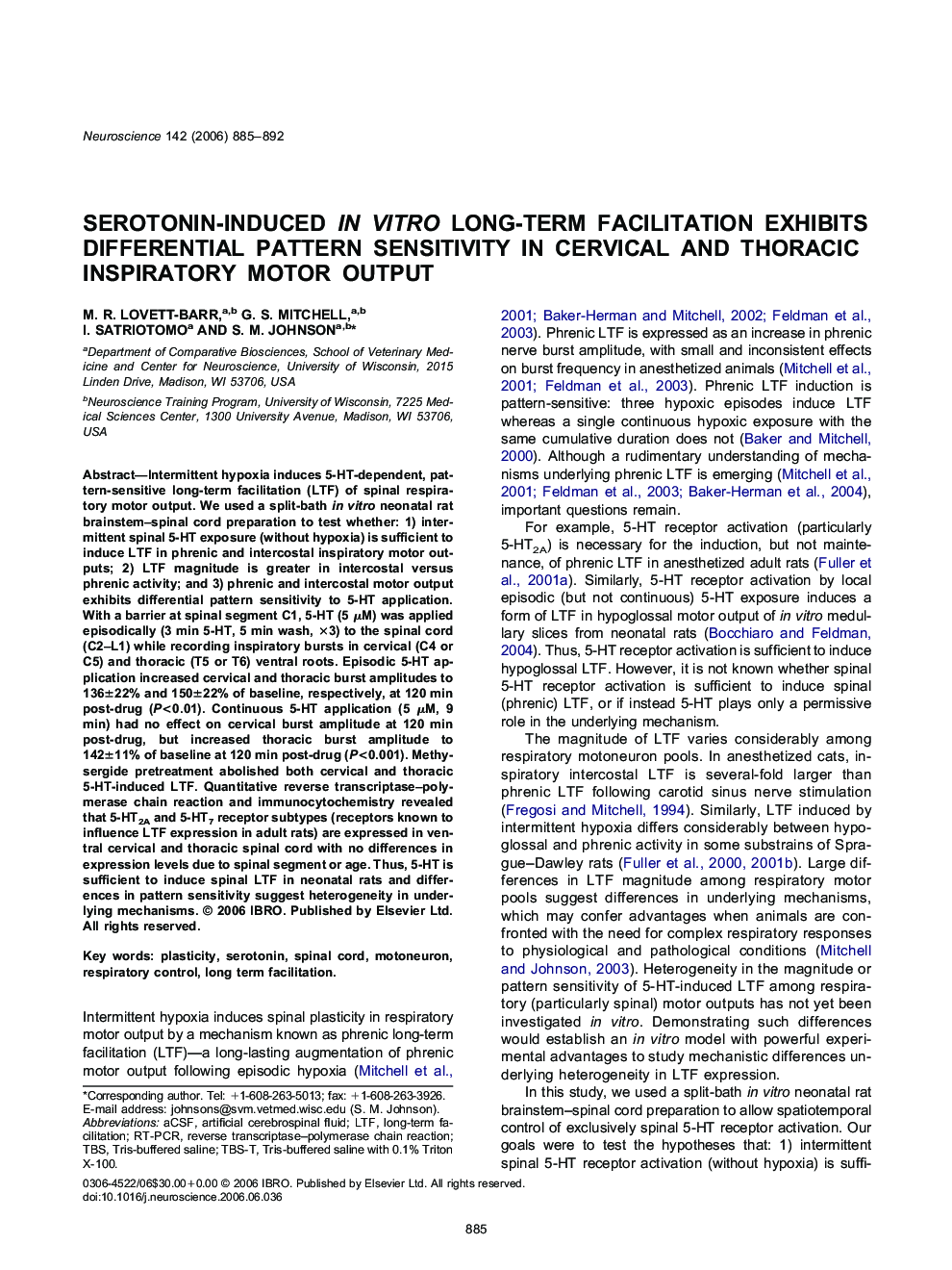| Article ID | Journal | Published Year | Pages | File Type |
|---|---|---|---|---|
| 4341969 | Neuroscience | 2006 | 8 Pages |
Intermittent hypoxia induces 5-HT-dependent, pattern-sensitive long-term facilitation (LTF) of spinal respiratory motor output. We used a split-bath in vitro neonatal rat brainstem–spinal cord preparation to test whether: 1) intermittent spinal 5-HT exposure (without hypoxia) is sufficient to induce LTF in phrenic and intercostal inspiratory motor outputs; 2) LTF magnitude is greater in intercostal versus phrenic activity; and 3) phrenic and intercostal motor output exhibits differential pattern sensitivity to 5-HT application. With a barrier at spinal segment C1, 5-HT (5 μM) was applied episodically (3 min 5-HT, 5 min wash, ×3) to the spinal cord (C2–L1) while recording inspiratory bursts in cervical (C4 or C5) and thoracic (T5 or T6) ventral roots. Episodic 5-HT application increased cervical and thoracic burst amplitudes to 136±22% and 150±22% of baseline, respectively, at 120 min post-drug (P<0.01). Continuous 5-HT application (5 μM, 9 min) had no effect on cervical burst amplitude at 120 min post-drug, but increased thoracic burst amplitude to 142±11% of baseline at 120 min post-drug (P<0.001). Methysergide pretreatment abolished both cervical and thoracic 5-HT-induced LTF. Quantitative reverse transcriptase–polymerase chain reaction and immunocytochemistry revealed that 5-HT2A and 5-HT7 receptor subtypes (receptors known to influence LTF expression in adult rats) are expressed in ventral cervical and thoracic spinal cord with no differences in expression levels due to spinal segment or age. Thus, 5-HT is sufficient to induce spinal LTF in neonatal rats and differences in pattern sensitivity suggest heterogeneity in underlying mechanisms.
